
 |

Radiator and Fans
As in my previous water cooler projects,
I decided to run a radiator to cool the water from the block. Because
they are available locally, I again chose a Hayden transmission cooler
for the job. There do seem to be some cheaper radiators (automotive
transmission oil coolers) available, but not through the parts supply houses
in my community. This one was $30 retail from a local discount store.
The radiator tubes are 1/2" diameter, necked down to 3/8" for the plastic
tubing. The fin area on this model is about 7" by 9" with the tubes
making 4 passes through the hundred or so fins.
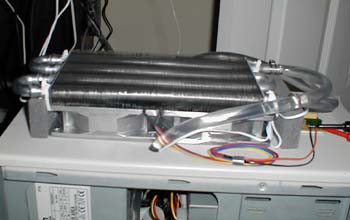 |
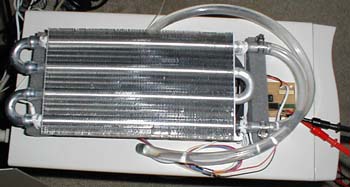
|
To get rid of the radiator's heat - as well as pull the heat from the case, I added a pair of 120 mm Panaflo fans from 2CoolTek. These are rated at 1700 RPM, 68.9 CFM, and 30 db-A noise. The fans will operate from 7 to 13.8 volts, which works out well for the next step in the project.
Back when the K6 was a relatively new processor, I found that the best cooling modification I made to the InWin A500 case I was then using, was cutting a "blow hole" in the top of the case. The blow hole and a 105 mm Radio Shack AC powered fan really pulled the heat out of the box. Since I needed to run air past the radiator anyway, I decided to incorporate dual blow holes to pull air from the case and push it past the radiator. This works so well that there was no need to keep the front case fan.
Fan Controller
A while back, I stumbled across a very
interesting thread on one of the forums at ARS
Technica. A poster named Etch was explaining a simple fan controller
circuit he had built to vary the voltage to a 12 volt case fan based on
the input of a 10k Ohm NTC Thermistor. I built the circuit and it
does a pretty good job. As I have it adjusted, it gives the dual
Panaflo fans 7 volts when the water temperature is 70°F and full voltage
at about 93°F.
The diagram below is the layout I used
to assemble the parts on to a perforated circuit board.
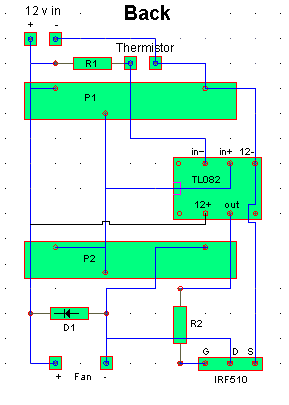
intersect the trace between P1 & P2. |
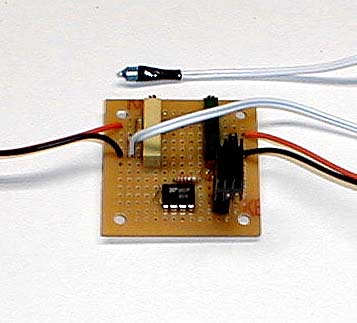
dual op-amp (all I had handy). |
You can take a read through the thread for the parts description and adjustment procedures here. Etch's circuit diagram is here. Thanks go out to Etch for this very useable circuit.
Cover
Not wanting to look at a radiator on top
of my case, I decided I needed a cover to clean up the appearance a little.
Off to the home center again. This time I found some perforated aluminum
sheet that looked like it might do the job. This stuff is meant to
be used as a grill and comes with a couple of different patterns of holes.
I measured out a pattern and cut and bent it to shape.
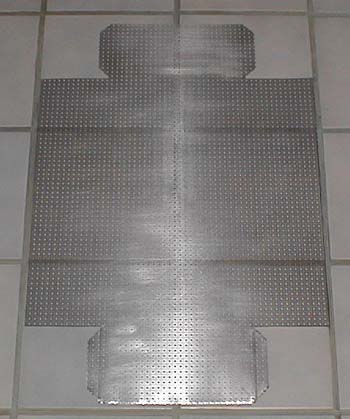 |
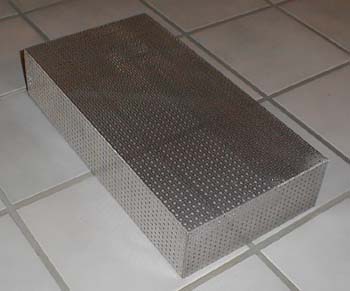 |
With a little paint that almost matches the case and some Velcro strips to hold it in place, I had a fairly clean looking prototype.
|
|
|
|